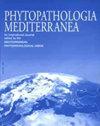苛养木藻纳米板数字PCR检测与定量分析
IF 1.9
3区 农林科学
Q2 AGRONOMY
引用次数: 0
摘要
苛养木杆菌是一种挑剔的革兰氏阴性菌,与几种重要的植物疾病有关,在许多实施了防止其传入和传播战略的国家,它被作为检疫性有害生物加以管制。为了制定有效的检疫措施,有效和早期发现病原体至关重要,特别是因为全球货物贸易增加了引入外来病原体的风险。本研究旨在将两种基于qPCR的诊断方法(SYBR Green和Probe based qPCR)应用于基于纳米板的数字PCR检测。使用两种数字PCR方法(基于evgreen和基于probe的)检测病原体与标准qPCR相似,具有100%的灵敏度、特异性和准确性,同时在使用具有低浓度宿主DNA的实验样品时提供准确的病原体绝对定量。在未稀释的植物DNA中加入低浓度的苛养X.,只有TaqMan法保持了令人满意的性能和定量,因此是首选方法。这些结果是证明基于纳米板的数字PCR检测植物病原体有用性的第一步,它比qPCR具有更高的通量,减少了诊断分析的时间和成本。本文章由计算机程序翻译,如有差异,请以英文原文为准。
Nanoplate digital PCR assays for detection and quantification of Xylella fastidiosa
Xylella fastidiosa is a fastidious Gram-negative bacterium that is associated with several important plant diseases, and is regulated as a quarantine pest in many countries where strategies are implemented to prevent its introduction and spread. To enact efficient quarantine measures, effective and early detection of the pathogen are essential, especially because global trade of goods increases the risks of introduction of alien pathogens. this study aimed to adapt two qPCR-based diagnostic methods (SYBR Green and Probe based qPCR), already in use to detect X. fastidiosa, for use with a nanoplate based digital PCR assay. Detection of the pathogen using the two digital PCR assays (EvaGreen- and Probe-based) was similar to standard qPCR, giving 100% sensitivity, specificity, and accuracy, while providing accurate absolute quantification of the pathogen when using experimental samples that had low concentrations of host DNA. Using undiluted plant DNA added with low concentrations of X. fastidiosa, only the TaqMan method maintained satisfactory performance and quantification, and is therefore preferred. These results are a first step demonstrating the usefulness of nanoplate-based digital PCR for detection of plant pathogens, which allows greater throughput than qPCR, reducing the time and cost of diagnostic assays.
求助全文
通过发布文献求助,成功后即可免费获取论文全文。
去求助
来源期刊

Phytopathologia Mediterranea
生物-植物科学
CiteScore
4.40
自引率
8.30%
发文量
28
审稿时长
6-12 weeks
期刊介绍:
Phytopathologia Mediterranea is an international journal edited by the Mediterranean Phytopathological Union. The journal’s mission is the promotion of plant health for Mediterranean crops, climate and regions, safe food production, and the transfer of new knowledge on plant diseases and their sustainable management.
The journal deals with all areas of plant pathology, including etiology, epidemiology, disease control, biochemical and physiological aspects, and utilization of molecular technologies. All types of plant pathogens are covered, including fungi, oomycetes, nematodes, protozoa, bacteria, phytoplasmas, viruses, and viroids. The journal also gives a special attention to research on mycotoxins, biological and integrated management of plant diseases, and the use of natural substances in disease and weed control. The journal focuses on pathology of Mediterranean crops grown throughout the world.
The Editorial Board of Phytopathologia Mediterranea has recently been reorganised, under two Editors-in-Chief and with an increased number of editors.
 求助内容:
求助内容: 应助结果提醒方式:
应助结果提醒方式:


